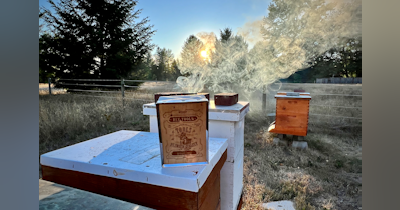The serious ethanol industry began in the 1970s when petroleum-based fuel became expensive and environmental concerns involving leaded gasoline created a need for an octane additive. It was soon obvious that corn was a good choice for ethanol production because there was lots of it and there could be a lot more. Government subsidies for ethanol helped keep the fuel in production when ethanol prices fell with crude oil and gasoline prices in the early 1980s, which gave birth to a policy called the “Minnesota Model” for ethanol production. This gave farmers a boost because The Minnesota Model was an agreement between local public and private parties who work to keep profits in the community the ability to provide jobs (and the economic and political benefits associated with job growth and income) and added value to agricultural products while strengthening rural communities. Which means farmers were better off too.
Thus, ethanol’s use as an oxygenate to control carbon monoxide emissions encouraged increased production of the fuel through the decade and into the 1990s.
New research led by the University of Wisconsin–Madison (my alma mater, by the way) found that this:
- Increased corn prices by about 30%,
- Expanded corn cultivation by 8.7%,
- Increased fertilizer use by 3 to 8%,
- Degraded the water supply with chemical runoff, and
- Caused enough domestic land use change emissions such that the carbon intensity of corn ethanol produced no less than gasoline and likely at least 24% higher.
This basically reaffirms what many suspected, that corn ethanol is not a climate-friendly fuel, and we need to accelerate the shift toward better renewable fuels. Fast.
The Renewable Fuel Standard really did drive up crop prices and corn cultivation in the U.S., covering an additional 6.9 million acres of land. Other commodity crop prices, such as wheat and soybeans, rose by 20%. This increased agriculture has obviously been accompanied by more fertilizer use and more water quality degradation (3–5% increases in nitrate leaching and phosphorus runoff) and more carbon emissions attributable to simply more farmers using more land, bumping up pollution by the entire agricultural industry by several percent.
The Government’s new Renewable Fuel Standard was supposed to encourage the development of cellulosic biofuels that didn't compete for the land where food is grown, but they have not proven to be economically viable. You could envision replacing the existing 15 billion gallons of corn ethanol now produced with those next-generation biofuels as that production came online, restoring millions of acres of cornfields into perennial native grasslands and other landscapes that could potentially be utilized for bioenergy, still be economically productive, and also help reduce nitrate leaching, erosion and runoff. And, keeping a whole bunch of the carbon in the soil, in the soil. But here's real money in corn and Americans are paying for this in two ways: Through increased prices for food and out of their taxes for subsidies.
Under the Renewable Fuel Standard, a fuel had to achieve at least a 20% reduction in greenhouse gas emissions relative to petroleum to qualify as renewable. Originally, corn ethanol just met the threshold in the EPA’s 2010 regulatory impact analysis, with emissions estimated to be 20–21% lower compared with gasoline. But ethanol’s environmental profile hasn’t matched expectations. With 20:20 hindsight it’s easy to see why. In the EPA’s original analysis, they estimated a very small amount of domestic land use change. They hadn’t expected such a big response because cropland area in the U.S. had been declining for the previous 30 years.
At the time the EPA’s estimates suggested that the U.S. land use change would sequester carbon and help improve the carbon footprint of ethanol. But it didn’t. Instead, it looks like it actually increases it 20% higher than gasoline.
Cellulosic and other advanced biofuels — such as those made from switchgrass, other perennial plants or waste materials — offer an opportunity to build off that start in a more sustainable manner. But they don’t exist. Yet.
As a result of this ethanol mess, agricultural bankers reported a 22% increase in farmland values in the central Corn Belt during 2021 and they expect values to continue to rise in the opening months of this year. Iowa had the largest increase, 30%, in the corn belt.
So, do you want to bet that the land that was supposed to be turned into something environmentally friendly isn’t going to be changed? More corn, more fertilizer, more carbon released, more pollution, more, more, more.
And not one square foot of bee pasture.














